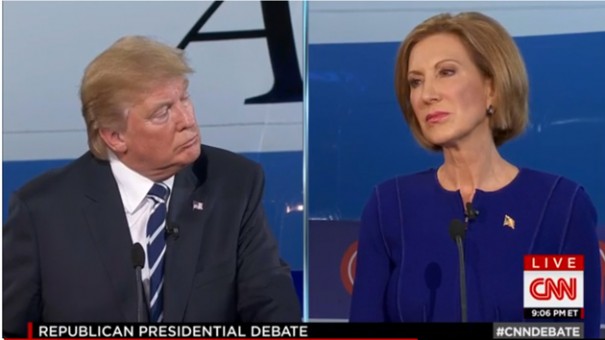From FDR to Donald Trump: A Jump Too Far?
A MiddleWeb Blog
 FDR’s “Four Freedoms” speech in 1941 versus Donald Trump’s debate performances this year: meaningful connection or ridiculous comparison?
FDR’s “Four Freedoms” speech in 1941 versus Donald Trump’s debate performances this year: meaningful connection or ridiculous comparison?
That’s what I found myself asking after teaching a fairly rollicking eighth-grade history class recently. Was the class exciting for good reasons – or for ones as superficial as a Twitter feed on Trump’s hairstyle?
To begin, we followed up a background article on the “Four Freedoms” speech with the question: What do you think FDR was trying to achieve in this speech, beyond simply preparing the American people for war?

FDR delivers 4 Freedoms address to Congress, 1941
My goal was to springboard from FDR’s list of freedoms into our unit on the American Revolution. Ideally, students would remember freedom of expression and worship, freedom from fear and want, when we looked at pre-Revolutionary events such as the Maryland Toleration Act of 1649 and the Zenger trial in 1735, as well as the drumbeat toward war from 1763 to 1775.
Students’ answers to what FDR was trying to achieve included make people’s futures better, enforce the ideals of the world, do more than send aid to Britain and establish peace, referring to the creation of the United Nations and the Universal Declaration of Human Rights after the war.
When we listened to an excerpt from the speech itself, I asked students to move from content to tone. They suggested adjectives such as commanding, passionate, comforting and authoritative.
Then, with 15 minutes remaining in a 43-minute class, we pivoted to the day’s news, which was saturated by analysis of the second Republican presidential debate from the night before.
The eighth graders watched two brief clips from the debate: one three-minute analysis of the various issues, including immigration and the Iranian nuclear deal, and one 50-second clip of Donald Trump explaining his previous comments about Carly Fiorina’s appearance.
With each of the three class sections, I did something a little different depending on how much time was left, but each activity focused on tone.
Here’s what we did
In one section, students talked with a partner about how FDR would feel about the tone of the Republican debate. Regardless of students’ political views, many agreed with terms such as disappointed and shocked.
With a second section, I asked whether students would prefer to listen to FDR’s speech or to the modern politicians. The class was split. Half preferred Roosevelt’s noble tone, while the others appreciated the entertainment value of modern politics.
With the last section, we had a little more time. For eight minutes, students got into groups to write three ground rules for the next Republican debate, keeping the candidates’ interactions both substantive and engaging. Most groups came up with the idea of requiring a “cease-fire” period during the debate when insults were not permitted.
At the end of class, students bubbled with talk about politics, and some watched more clips from the debate at home on their own that night.
Then, some second-guessing
But, after coming down from the high of an energetic day of teaching, I found myself second-guessing the lesson.
Did I take the low ground in relating a presidential speech at a time of worldwide crisis to an early gathering of presidential hopefuls in a time of mass media entertainment?
Did my students have enough context to understand the difference between the two? They knew about the Depression and a little about World War II, but nothing in depth. They understood the difference between a primary and a general election, but we hadn’t studied the electoral college or the Constitution yet.
Making history and current events mashups work
So I came up with some ground rules for myself for such teaching in the future:
- Remember that any comparison of then to now is imperfect by definition – but generating enthusiasm can inspire students to find out more on their own.
- Recognize that one day of current events is just that – one day over the course of a year. Ideally, as the year goes on, students will read more political articles that will fill in gaps in their understanding.
- Realize that certain themes do not go away. Looking at isolationism before World War II versus isolationism now is valid, as long as students understand that the United States occupies a very different role in the world 75 years later.
- Rely on the facts and on people’s words. If I can incorporate the Neutrality Acts of the 1930s and the Lend-Lease Act of 1941 into a discussion about FDR’s attempting to change Americans’ perspective on war – if we can compare Charles Lindbergh’s “America First” speech of September 1941 to Donald Trump’s proposal to build a wall between Mexico and the United States – then we have meaty content on which to base opinions.
Through the year I will do my best to fill in these gaps, not letting myself be overly swayed by the charisma of politicians then or now.
What would you say about Sarah’s teaching ground rules? Or the appropriateness of her lesson?




































